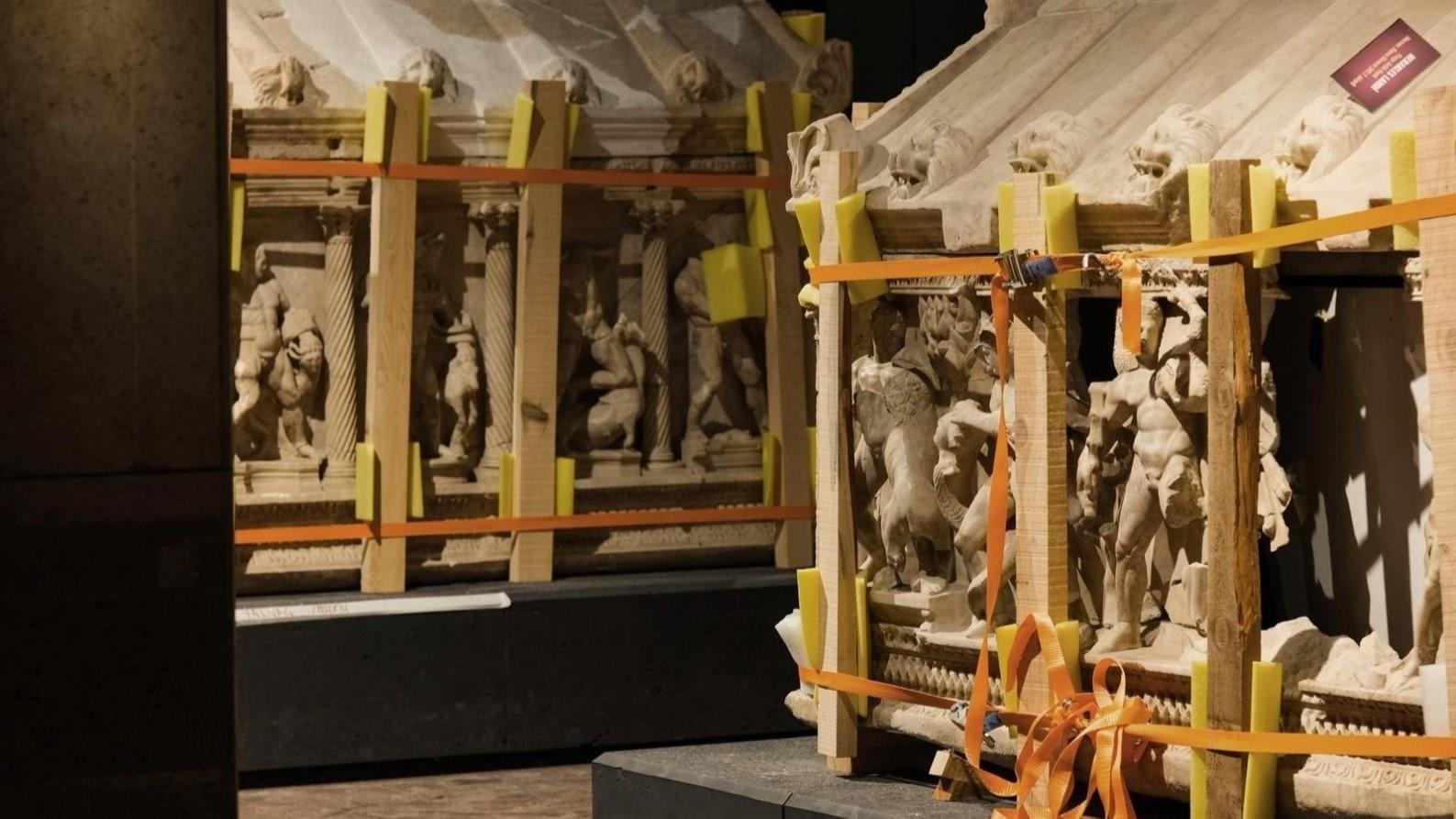
Nearly 100,000 artifacts housed at the Antalya Archaeology Museum have been carefully relocated to secure storage facilities following the museum’s closure on July 16, after authorities deemed the building structurally unsafe.
The transfer operation, described by officials as one of the most comprehensive in Türkiye in recent years, involved ancient sculptures, coins, sarcophagi, ceramics, mosaics and delicate pieces rarely displayed to the public.
Specialized teams oversaw the process to ensure that fragile artifacts — some dating back thousands of years — were protected against vibration, temperature changes and potential damage during transport.
The decision to move the collection came after an earthquake safety analysis concluded that the museum buildings did not meet current seismic performance standards.
The report pointed to weak foundations with insufficient load-bearing capacity and unusually small dimensions, warning that both visitors and priceless artifacts faced serious risks if the structure remained in use.
With demolition underway, the museum’s storage areas and auxiliary lodgings on the site were the first to be dismantled.
Plans for a new, expanded facility are also advancing. The future museum is expected to nearly double the current size, offering 19,500 square meters of indoor space and more than 22,600 square meters outdoors.
Exhibition halls will increase by over 160 percent, allowing many artifacts previously kept in storage to be displayed for the first time.
The project will also triple storage capacity, introducing climate-controlled and technologically advanced conservation units designed to safeguard the collections under international standards.
A public debate continues over whether demolition is the right course, as critics argue that the museum could have been reinforced instead of demolished.